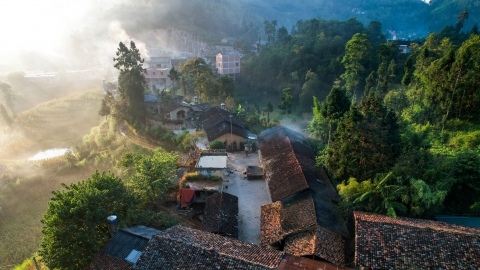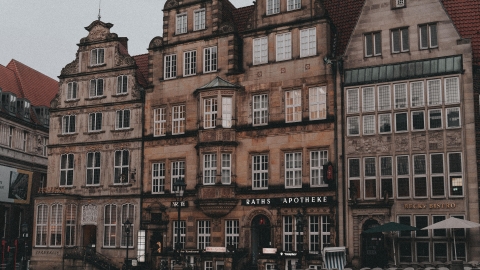In the middle of splendid Saigon lies a unique cultural heritage called Nghia An Assembly Hall, which preserves the architectural, cultural and spiritual quintessence of the Chaozhou people. Located at 676 Nguyen Trai Street, District 5, the Assembly Hall stands tall as an everlasting symbol, preserving the memory of a distinctive immigrant community.
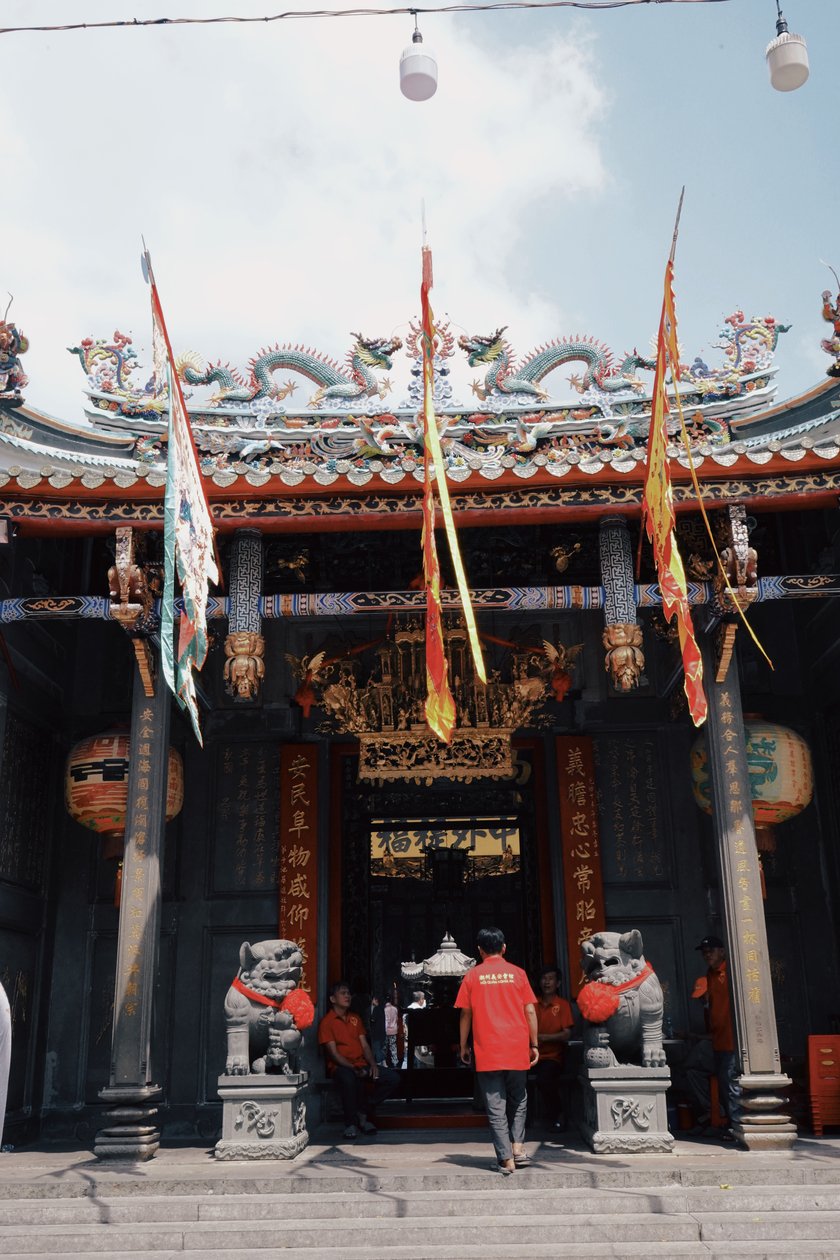
Nghia An Assembly Hall is a unique architectural work in Ho Chi Minh City that attracts tourists.
Admire the impressive architectural beauty
Passing through the majestic gate, visitors seem to be lost in another world, separate from the hustle and bustle of the city. The first characteristic of Chaozhou architecture is present through the curved, softly curving tiled roof, meticulously decorated with pieces of porcelain. Every small detail, from the majestic statue of two dragons fighting for a pearl on the roof ridge, to the delicate reliefs on the ridge, all show the talent and dedication of the artisan.
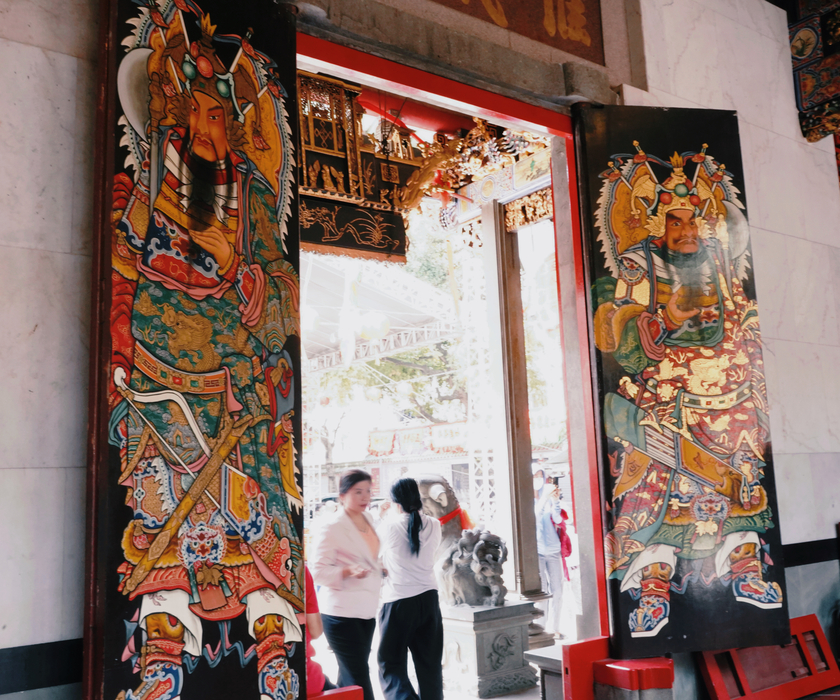
The door with intricately carved images.
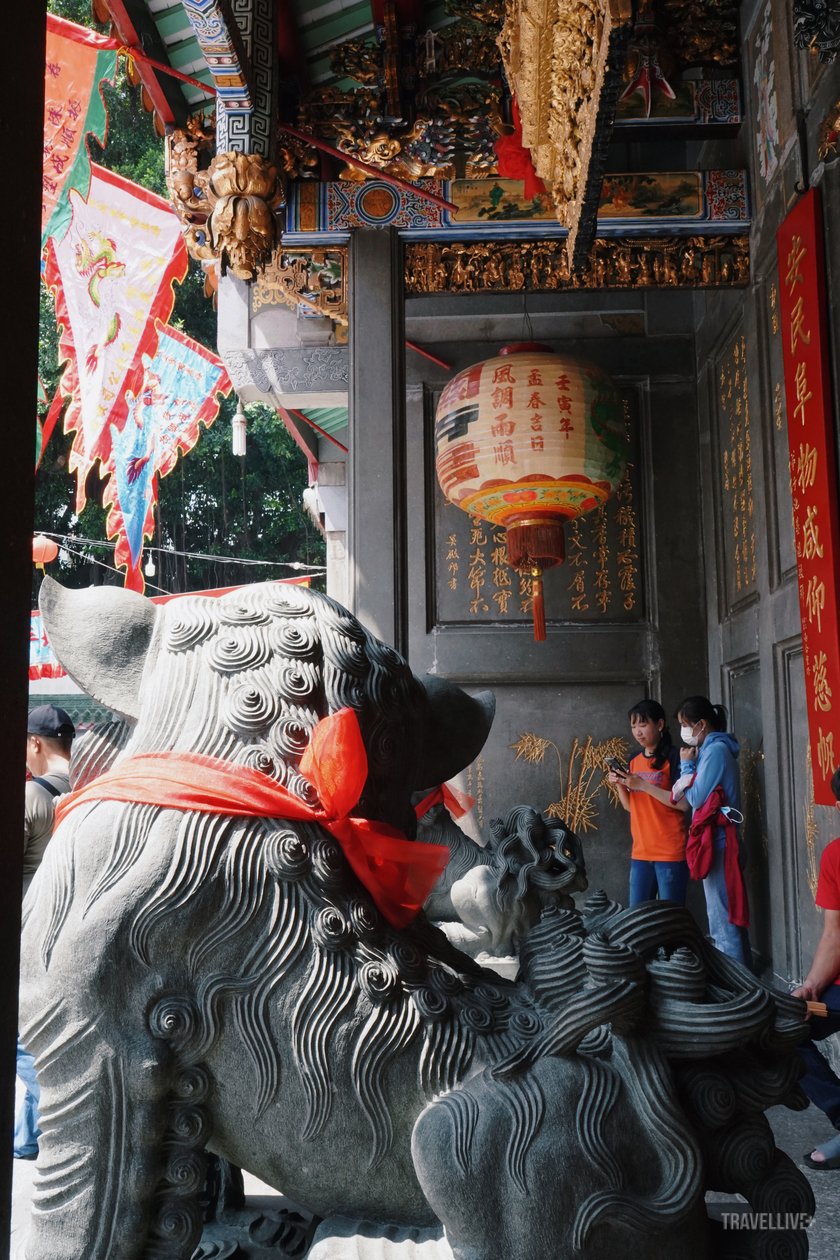
Underneath the elaborately decorated tiled roof are a pair of symmetrical stone unicorns, and the columns and beams are colorfully and meticulously decorated.
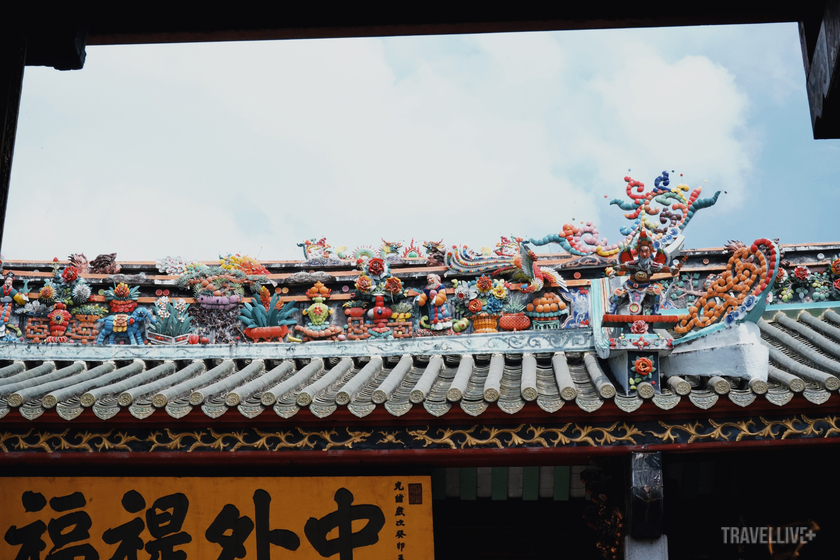
The characteristic features of Chaozhou architecture are present through the curved, softly curving tiled roofs, meticulously decorated with pieces of porcelain.
Going deeper inside, visitors will be overwhelmed by the vast space, divided into many separate areas. The front hall is where the majestic statue of Guan Yu is placed, showing the respect of the Chaozhou people for the hero of the Three Kingdoms.
Mr. Loc (Nghia An Assembly Hall Management Board) said: "Quan Cong is a famous figure in Chinese history during the Eastern Han Dynasty and lived during the Three Kingdoms period. For business people, worshiping Quan Cong will be supported by the god in their work to be smooth and successful. Culturally, worshiping Quan Cong shows remembrance of one's homeland."
The main hall is where important ceremonies take place, with vivid murals depicting Chinese folk tales and history. It also preserves many valuable artifacts such as horizontal lacquered boards, parallel sentences, wooden panels, ceramic statues... bearing the mark of Chaozhou culture.

Nghia An Assembly Hall worships Quan Cong - a heroic figure of the Three Kingdoms period, so it also has another name, Quan De Temple or Ong Pagoda.
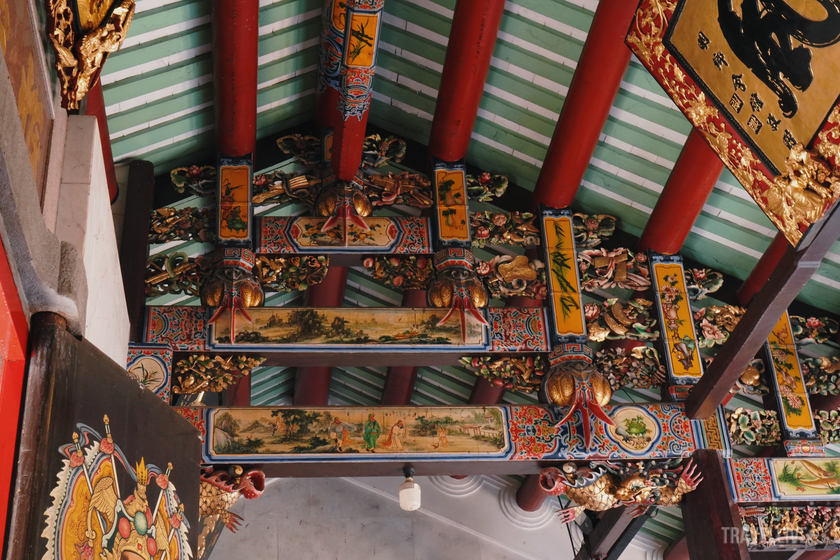
Delicate design lines and beautiful colors.
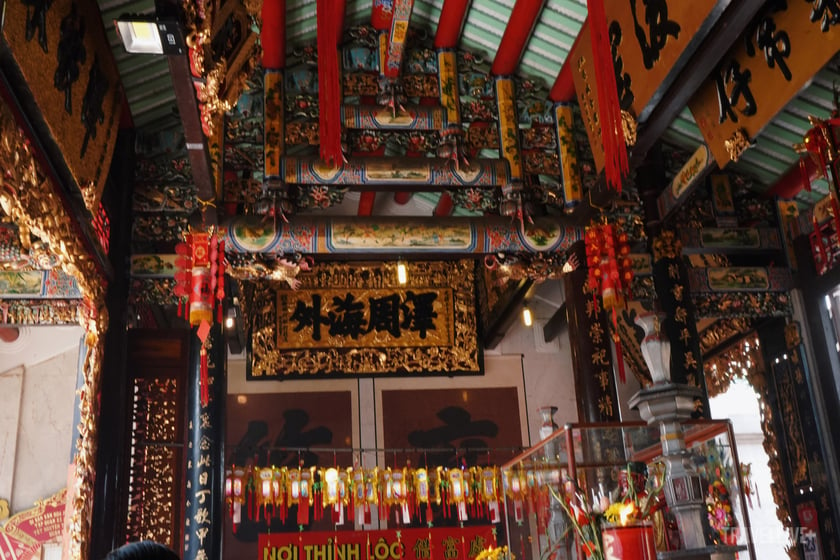
The system of pillars and beams typical of Chinese culture at Nghia An Assembly Hall.
Discover the ancient Chaozhou culture
Nghia An Assembly Hall is not only a unique architectural work, but also a place to preserve precious intangible cultural values. Quan De Festival is held on the 24th day of the 6th lunar month every year, attracting a large number of people to participate, showing respect and community cohesion. Visitors coming here not only have the opportunity to admire the unique architecture, but also immerse themselves in the vibrant festival atmosphere, enjoy traditional dishes and learn about the spiritual culture of the Trieu Chau people.
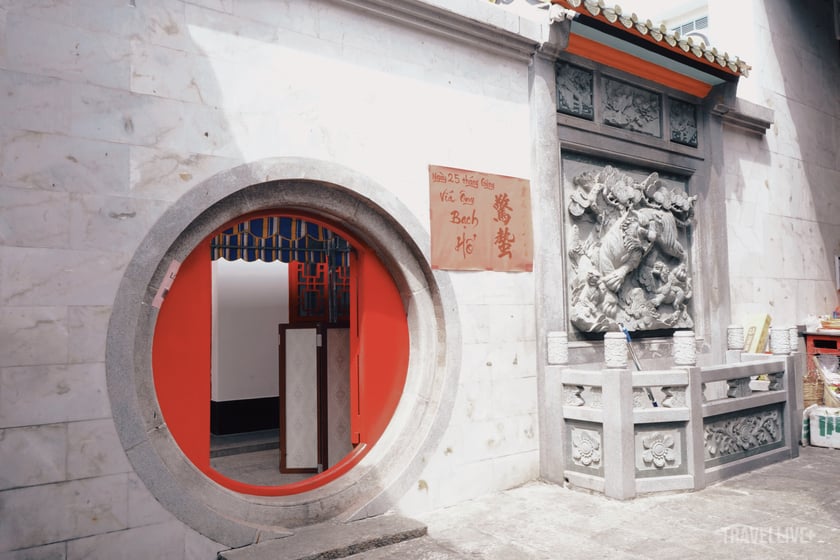

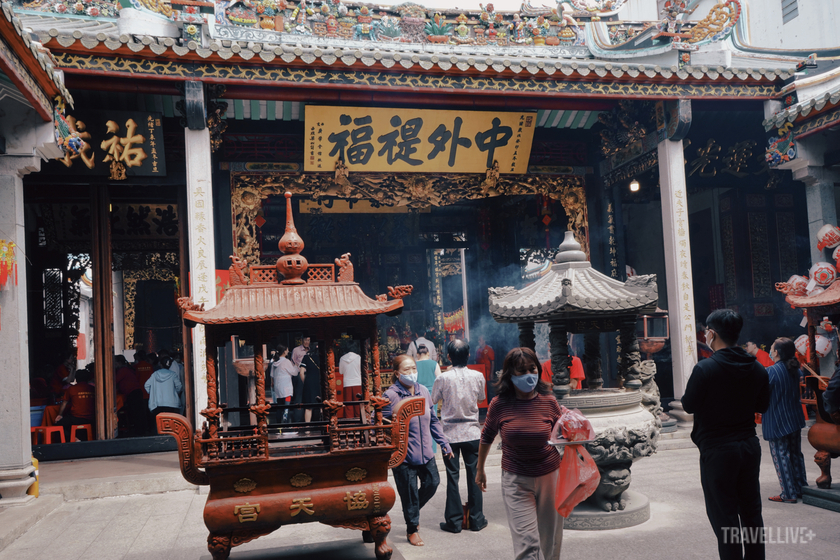
This place is like a living museum, preserving the memory of a distinctive immigrant community.
Through the ups and downs of history, Nghia An Assembly Hall still retains its architectural and spiritual values, becoming an unmissable destination for those who want to explore the culture of the Chaozhou people in Ho Chi Minh City. This place is like a living museum, preserving the memories of a unique immigrant community, contributing to enriching the diverse cultural picture of the city.


























